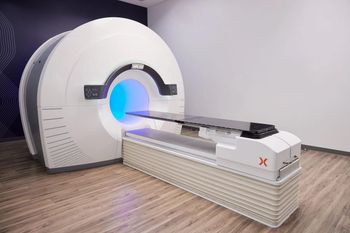
FDA Clears Siemens Healthineers Intelligent Radiography System
Ceiling-mounted system offers intelligent interface to guide technologists through exam.
Siemens Healthineers announced Monday it has secured 510(k) clearance from the U.S. Food & Drug Administration for its ceiling-mounted radiography system.
Dubbed YSIO X.pree, this system uses the MyExam Companion intelligent user interface and comes with a new 3D camera that can help technologists with patient positioning and advanced collimation. Together, with a new smart image processing engine, company officials said, the system can augment patient and user experience, as well as optimize clinical operations.
“The YSIO X.pree ceiling-mounted radiography system represents a dramatic leap forward in intelligent X-ray imaging,” said Niral Patel, vice president of X-ray products, “providing our customers with an unprecedented level of intuitive operation for consistent X-ray images and potential faster workflow.”
For consistency, according to a company statement, the new image processing database allows technologists to set preferred image contrasts, and it removes image noise. In addition, it allows for low-dose settings, can limit the need for additional patient exposure, and produce cropped images with artificial intelligence-based cropping.
For more coverage based on industry expert insights and research, subscribe to the Diagnostic Imaging e-Newsletter
This is Siemens’ first X-ray system armed with MyExam Companion. While this interface can help technologists of any experience level work through an X-ray procedure, said company representatives, it also brings together available demographic patient data with other machine-observable, patient-specific details that can lead to optimal acquisition and reconstruction parameters.
The system’s 3D camera offers several features that can streamline and accelerate workflow:
- Virtual Collimation: Allows technologists to adjust, via a touchscreen monitor, the size and shape of the X-ray beam to reduce the volume of tissue exposed to radiation.
- Smart Virtual Ortho: Shortens preparation times for multi-image orthopedic acquisitions by adjusting exposure parameters based on individual patients, making it easier to capture long-leg and full-spine images.
- Auto Thorax Collimation: Uses automated, AI-based body part detection and collimation to analyze the patient’s body contour and make half-second collimator blade adjustments, speeding up the workflow associated with thorax studies.
Newsletter
Stay at the forefront of radiology with the Diagnostic Imaging newsletter, delivering the latest news, clinical insights, and imaging advancements for today’s radiologists.




























